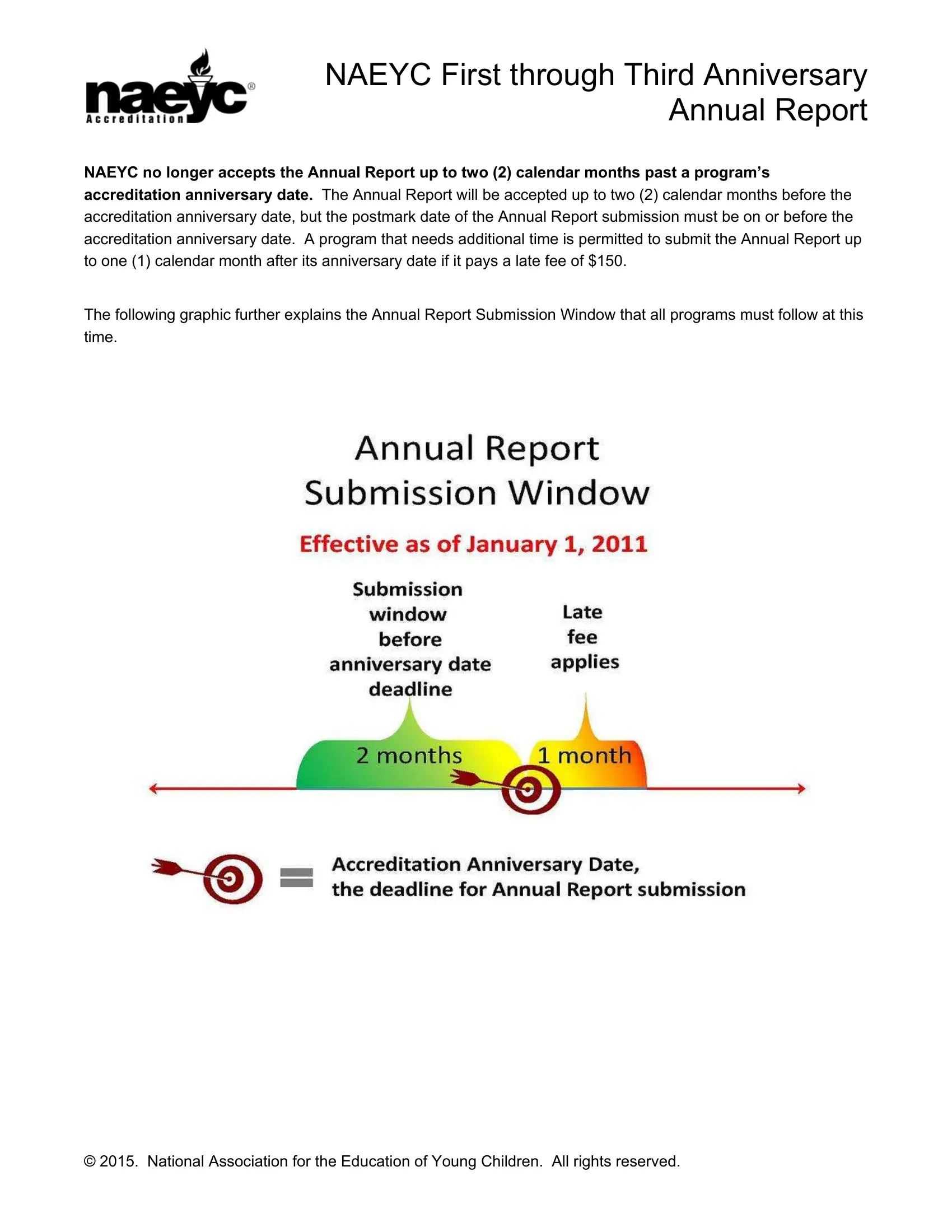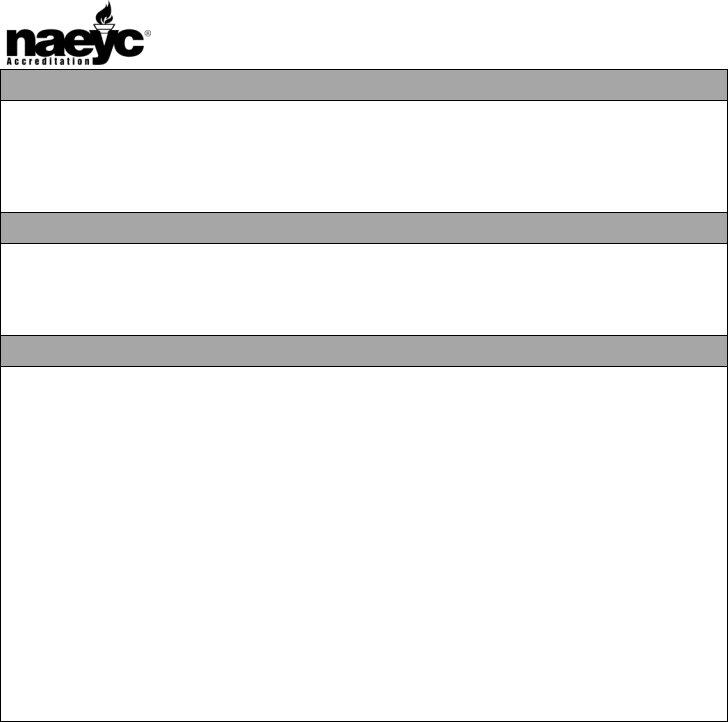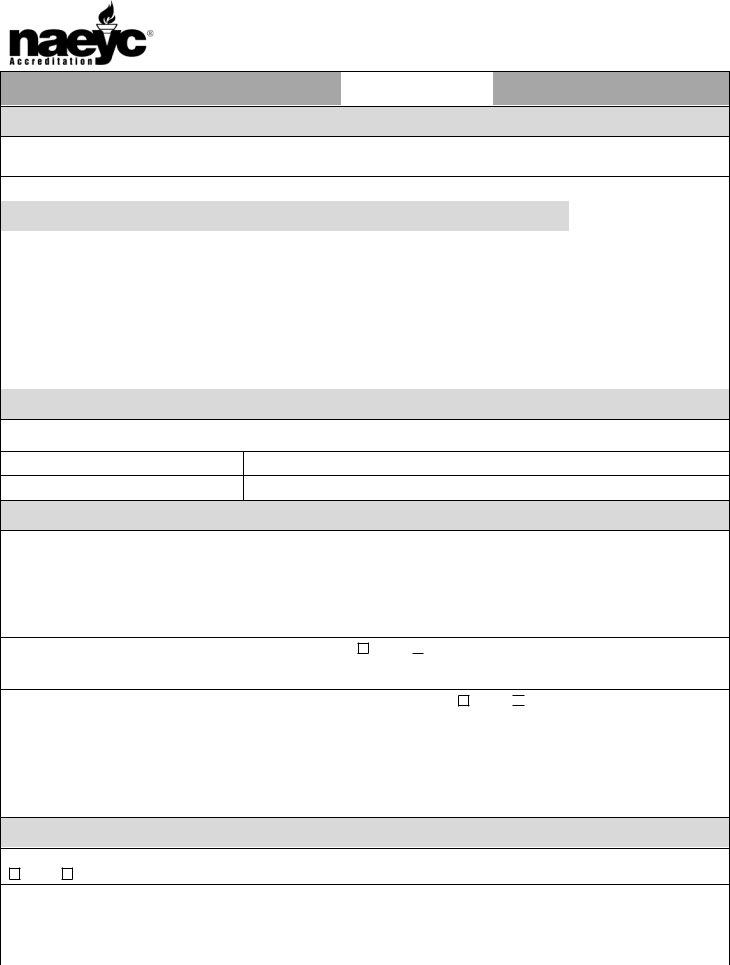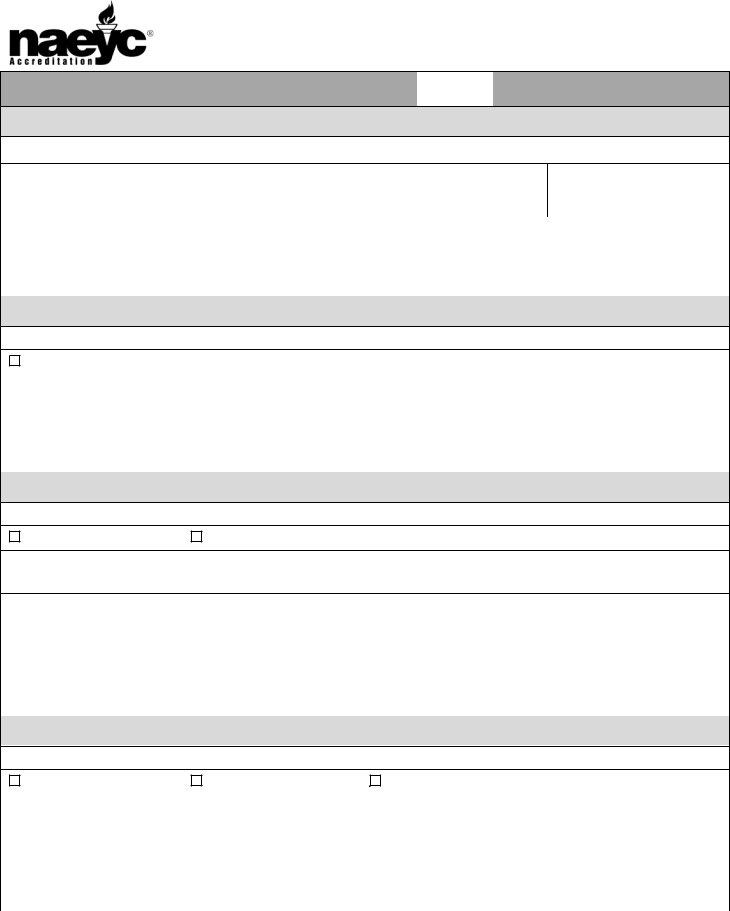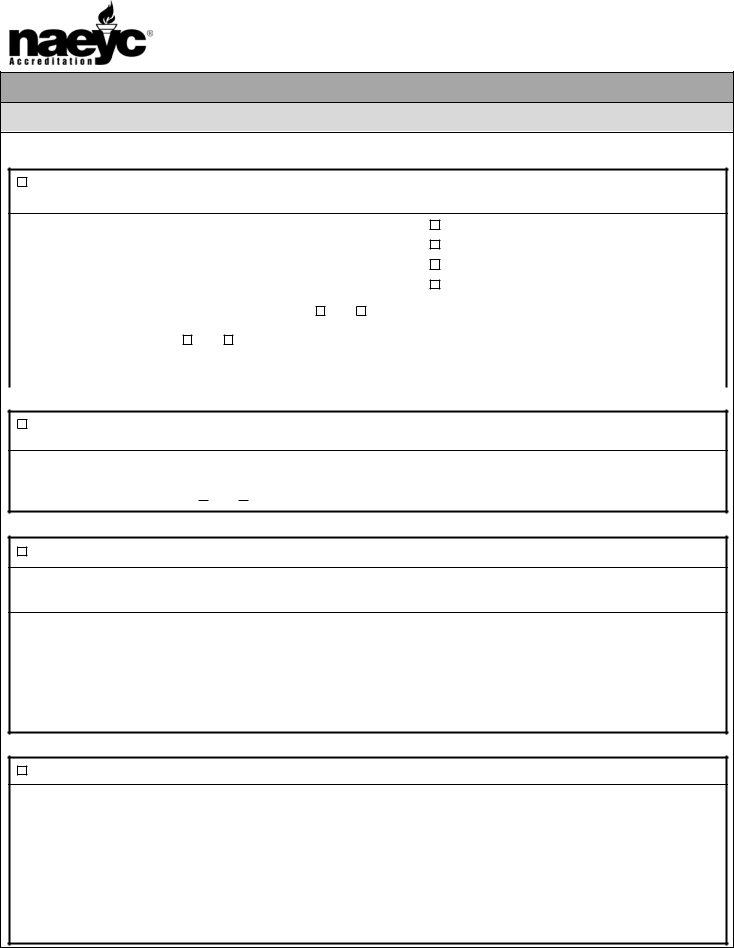With the online editor for PDFs by FormsPal, you're able to fill out or change naeyc right here. Our development team is relentlessly endeavoring to develop the tool and enable it to be much faster for people with its extensive functions. Unlock an endlessly progressive experience today - check out and discover new opportunities along the way! To get the ball rolling, go through these basic steps:
Step 1: Press the orange "Get Form" button above. It'll open up our pdf editor so you could start completing your form.
Step 2: With this advanced PDF editor, you could accomplish more than simply fill out blank fields. Express yourself and make your docs look faultless with customized textual content put in, or fine-tune the file's original content to excellence - all comes along with an ability to incorporate your personal graphics and sign the document off.
Completing this form demands care for details. Ensure each field is filled in correctly.
1. While filling in the naeyc, make certain to include all of the necessary blanks in its relevant section. It will help expedite the process, allowing your information to be processed efficiently and accurately.
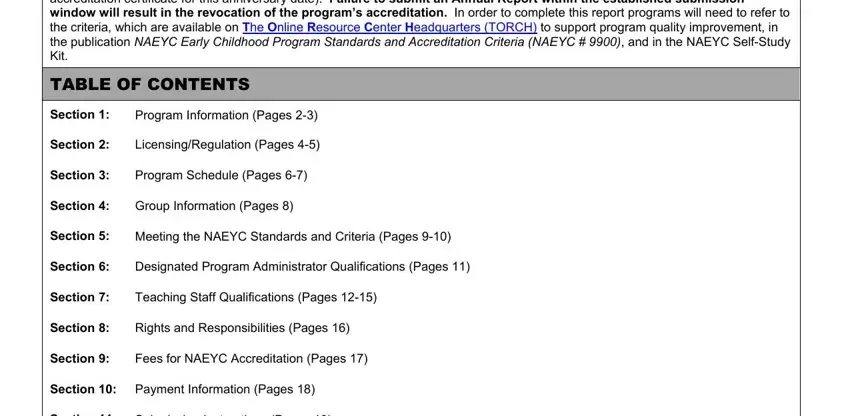
2. Once the previous part is complete, you should put in the required particulars in National Association for the, and Program ID allowing you to go further.

3. The third stage will be straightforward - fill out all of the form fields in Prog, gram Ident, ification, r on all correspon, ndence and offici, ial documents fro, om NAEYC inclu, uding the NAEYC, C Accreditation C, Certificate, Progr, Legal, Progr, ram Name name to appear, and ram ID to finish this part.
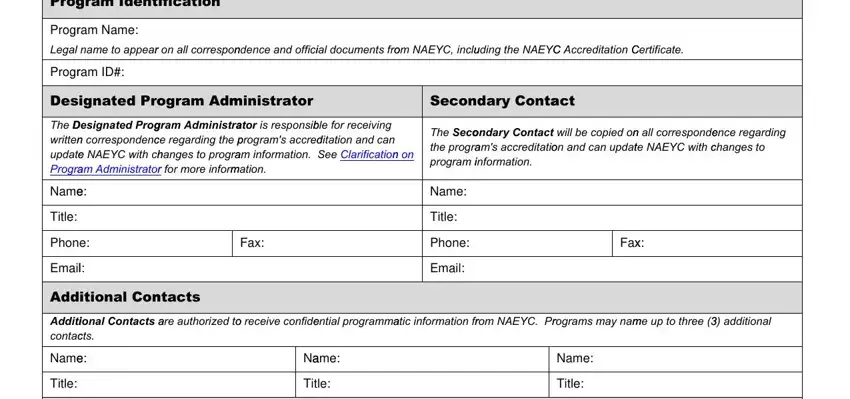
Lots of people frequently get some things wrong while filling in om NAEYC inclu in this area. You should go over what you enter right here.
4. It is time to begin working on this next section! In this case you've got all of these NAEY Accred the pr A grou pursui, YC Accreditation ditation process, is granted to the all eligible, overall program ps a program ser e, ther programs th, at operate within, n your programs, facility, My pr, rogram is the o, only program th, hat operates wi, thin its facility, Yes, and NOTE be obs blanks to complete.
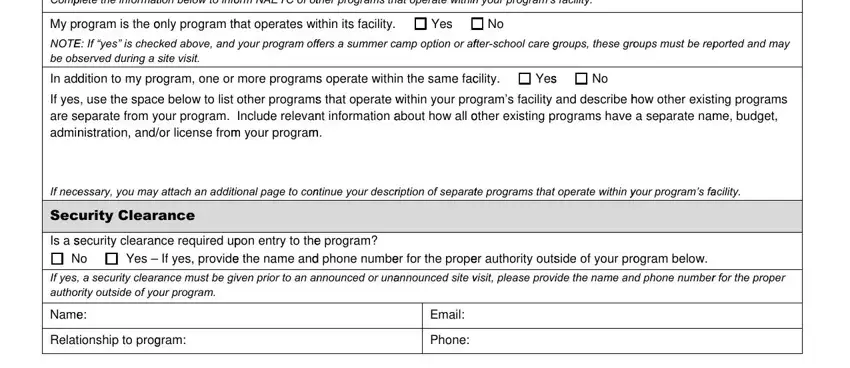
5. This document has to be completed with this area. Below one can find a comprehensive set of form fields that need accurate details for your form usage to be accomplished: Relat, National, Association f, for the Educa, ation of Young, g Children A, All rights reser, rved, and Program ID.

Step 3: After you have reread the details you given, just click "Done" to finalize your FormsPal process. Make a 7-day free trial option at FormsPal and get instant access to naeyc - download or edit in your personal cabinet. When using FormsPal, you can complete forms without stressing about information incidents or records being shared. Our secure platform helps to ensure that your personal data is maintained safe.
